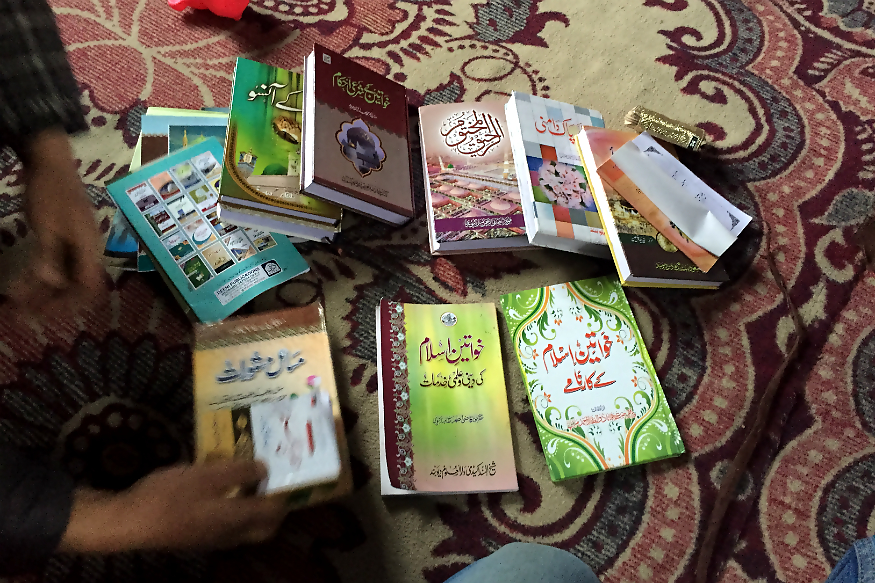
views
Pulwama: On the intervening night of January 31 and February 1, a shocking video of a woman’s assassination, allegedly killed by militants, surfaced on social media. The video sent shockwaves across Kashmir Valley.
The 9-second-long video shows the woman kneeling on the snow-clad ground, pleading with the assassinator with folded hands. The next moment she is shot in the chest and falls on the ground, her fists clenched. The gunman, who could not be seen in the video, then fired another bullet which hit her chin and pierced her neck. Blood splashed across the white surface and the woman was dead.
Next morning, people of Sugan village in Shopian found the bullet-riddled body of a young woman. She was identified as Ishrat Muneer from Dangerpora area of Pulwama district, over 15 kilometers away from the murder spot.
Munner was a sociology student and had left for the college the previous day at 10 in the morning. When she did not return at her usual time her family started to worry for her well-being as her phone was also switched off.
Youngest among six siblings, she was perusing Masters in Sociology through correspondence course. She would attend the college, about a kilometer away from her home, once a week. Muneer was also doing a diploma course in computers from local skill-learning centre.
Her anxious family contacted relatives but couldn’t get any lead about her. It was one of her friends who informed her parents that Muneer had not attended college that day.
“Her friend told us that she didn’t attend the classes and her phone was off since morning,” Muneer’s brother, Javaid Ahmad Bhat, said.
By evening, the family realised that something wrong had happened to her. But they clung to hope and waited for the morning. Meanwhile, during the midnight the assassination video of a woman was released and a relative called them up saying that the woman looked like Muneer.
The internet services in the area had been snapped because of a gunfight in the nearby village, hence the family couldn’t watch the video. They continued to wait, anxiously.
The day broke with the news that it was their daughter in the video who was killed.
Police say that the militants are behind the murder, but none of the outfits has claimed the responsibility yet. Muneer has become one of the many civilians murdered brutally, but no one claimed the responsibility.
Last year, similar videos of assassinations were released by militants. However, the militants also gave statements alleging that the slain civilians had been tipping off the security forces about militants.
In Muneer’s case, no such development has taken place. A deafening silence has draped this murder case. Muneer’s father is a sub-inspector rank officer and her brother is a constable in the J&K police.
Zeenat-ul-Islam, top commander of Al-Badr militant outfit, who was killed last month was also Muneer’s cousin. Police officials are hinting at a link between Muneer’s murder and Zeenat.
“We have found that she was close to Zeenat-ul-Islam. We believe that his wife didn’t like it and she got her killed,” said additional director general of J&K Police, Munir Khan. However, police said they are investigating the other details of the case.
The family has rubbished the police’s claims. “Zeenat was like our brother. But since he joined militancy, Ishrat visited his home only twice. She used to stay at home for most of the time. It was four months ago at the wedding of Zeenat’s sister that she visited his house. She last saw him at his funeral,” Javaid, Muneer’s brother said.
Zeenat-ul-Islam, 28, had spent most of his childhood at Muneer’s house.
“He lived at our house for 12 years. He grew up here, did his schooling from here. But after his first arrest in a militancy related case, he limited his visits. He would mostly stay at home,” said another brother of Muneer, Ishfaq Ahmad. He was close to Zeenat since childhood.
“Zeenat was close to our family. When his news of killing came in the middle of night, Ishrat was inconsolable. She fainted couple of time. He was like our brother,” Ahmad said.
Muneer happened to be first in her family to peruse higher education. Her family allowed her to study after graduation on the condition that she chooses correspondence mode.
“We suggested her to stay at home after graduation and we wanted to get her married. But she was keen on further studies,” said Ishfaq. “I supported her decision, but I didn’t want her to go out every day. So I asked her to study through distance mode," he added.
Ishrat used to be at home most of the time. Her family says she was a keen reader. In her room lies a pile of religious books written in Urdu, mostly related to the subject of women.

“She wanted to read more religious literature and was aiming to teach girls at a seminary in her neighborhood,” said Ishfaq. Dazed, her family is looking for answers.
“If militants have killed her we request them to give us a reason for it,” Ishfaq said. “If she had anything to harm militants, I will have no regrets and complaints,” he added.
“It is a war between militants and forces. If Ishrat has caused any damage to the militants, they did right by killing her,” Ishfaq said before breaking down. He was inconsolable.
“My sister has been killed. But no one is answering me what she had done,” Ishfaq said amid sobs.
Muneer’s funeral was attended by her close relatives and few neighbors. Her funeral prayers were led by her uncle and Zeenat ul Islam’s father, Ghulam Hassan Shah.
The intelligence officials in the district believe that Hizbul Mujahideen and Al-Badr outfits are behind her killing.
“We believe she was in contact with the militants. She was not kidnapped forcefully but was summoned to a particular place from where she was taken to some other place and tortured,” an official said, on the condition of anonymity. Family members also said that they found torture marks on her body.
Muneer was killed at Dragad, exactly at the same place where Zeenat ul Islam’s funeral prayers were offered. The place is 15 kilometers away from her home.
“We are sure there is some complex issue going on between militants. It is an example of internal rivalry and disputes,” the officer said. “Otherwise, she must have been helping militants often. Maybe, they had some misunderstanding or suspicion.”
This is not the first time when a woman has been killed by militants. There are dozens of examples. But what makes this incident peculiar is the filming of the incident and sharing it on social media.
Earlier in August last year, a 38-year-old woman, Shameema, was killed by militants in Drabgam area of same district. There was a rumor that she was an informer of forces. But no one ever claimed her killing, similar to Muneer’s case.
(Writer is a Kashmir based freelance journalist)



















Comments
0 comment